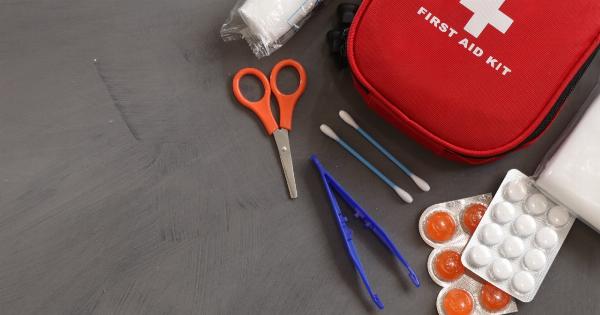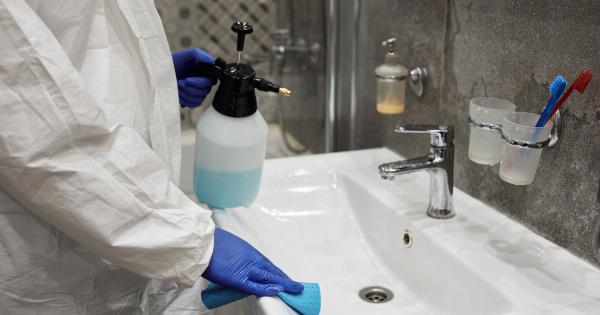Quitting a bad habit like smoking, drinking, or any addiction can be a challenging task, but it is not impossible. With the right mindset and approach, anyone can overcome their addiction and live a happier, healthier life.
In this article, we will provide a step-by-step guide for quitting any addiction in just 30 days.
Day 1-5: Preparing for Quitting
Preparing the mind and body is a crucial step for quitting any addiction. The first five days are all about preparing yourself for the journey ahead.
H2: Set a Quit Date
Pick a quit date that is no more than two weeks to a month away. This gives you enough time to prepare both mentally and physically.
H2: Identify Triggers and Plan Ahead
Think about what triggers your addiction and plan how to avoid or manage them. For example, if you smoke when you’re stressed, plan to take a walk or do some other activity to manage stress instead of smoking.
H2: Talk to Your Doctor
If you’re quitting smoking or any other addictive substance, it’s advisable to talk to your doctor first. They can advise you on various quitting options and even prescribe medication or therapy.
H2: Get Support
It’s essential to have a good support system in place when quitting. Tell your friends and family about your plan to quit and seek their support. You can also join a support group or talk to a counselor if necessary.
H2: Start a Journal
Keeping a journal can help you track your progress and identify any emotional triggers. Use it to document your feelings, successes, and any challenges you faced during the quitting process.
Day 6-10: Start Cutting Back
Gradual reduction is an effective way to quit an addiction. Start cutting back a little each day until you reach your quit date.
H2: Record Your Consumption
It’s essential to keep track of how much of an addictive substance you consume each day. It will help you know when you are making progress and when you need to step up your efforts.
H2: Slowly Decrease Consumption
Start reducing your consumption by 25% each day until you reach your quit date. This method will ensure that quitting is not too abrupt, making it easier to manage any withdrawal symptoms.
H2: Plan Your Replacement Strategy
Find a replacement strategy for your addiction. For example, if your addiction is smoking, find something else to do with your mouth or hands. You can chew gum, suck on mints, or use a fidget toy.
Day 11-15: Change Your Environment
Change your environment to make it harder to access your addiction. This will reduce the chances of any relapse.
H2: Remove Triggers from Your Environment
Get rid of anything that reminds you of your addiction. For example, if you’re quitting smoking, get rid of all cigarettes, lighters, and ashtrays in your home and car.
H2: Avoid Certain Places and People
Avoid going to places or meeting people who might trigger your addiction. This might include staying away from bars or meeting friends who smoke.
H2: Build a Supportive Environment
Surround yourself with supportive people who understand your challenge and can encourage you. Be around positive people who will help you achieve your goal of quitting.
Day 16-20: Practice Self-Care
Self-care is about taking care of your physical and emotional needs. It’s crucial to practice self-care when quitting an addiction.
H2: Start a Fitness Regimen
Exercise is a great way to take care of your body and mind. It helps to reduce stress levels, which can increase the success rate of quitting an addiction.
H2: Get Adequate Sleep
Sleep is crucial for your body and mind to function properly. It can help to reduce stress levels, making it easier to manage withdrawal symptoms.
H2: Pamper Yourself
Take some time to pamper yourself. This might include getting a massage, going on a weekend getaway, or treating yourself to your favorite meal.
Day 21-25: Optimize Your Diet
Optimizing your diet is essential when quitting any addiction. A healthy diet can help to control cravings and reduce withdrawal symptoms.
H2: Eat a Balanced Diet
Eat a balanced diet consisting of proteins, healthy fats, and plenty of fruits and vegetables. This will help to nourish your body and keep you feeling full.
H2: Drink Plenty of Water
Drinking plenty of water can help to flush out toxins from your body, keeping you hydrated and reducing cravings.
H2: Avoid Sugar and Processed Foods
Sugar and processed foods can lead to spikes in blood sugar levels, leading to cravings and making it harder to quit the addiction. Avoid them as much as possible.
Day 26-30: Celebrate Your Success
Celebrating your success can motivate you to keep going and maintain your new healthy habit.
H2: Treat Yourself
Treat yourself to something special to congratulate yourself on overcoming your addiction. It might be a new outfit, a day out with friends, or your favorite meal.
H2: Reflect on Your Experience
Reflect on your quitting experience and document your journey in your journal. This will help you remember how far you’ve come and motivate you not to relapse.
H2: Plan for the Future
It’s essential to plan for the future and be prepared for any challenges that might come your way. Set new goals, stay motivated, and maintain a positive attitude.
Conclusion
Quitting an addiction is a challenging but rewarding journey. With the right approach and mindset, anyone can recover and live a happier, healthier life. Following this step-by-step guide will help you quit your addiction in just 30 days.
Remember to be patient, seek support, and practice self-care. Celebrate your successes, reflect on your experience, and always have a positive attitude towards your future.

























